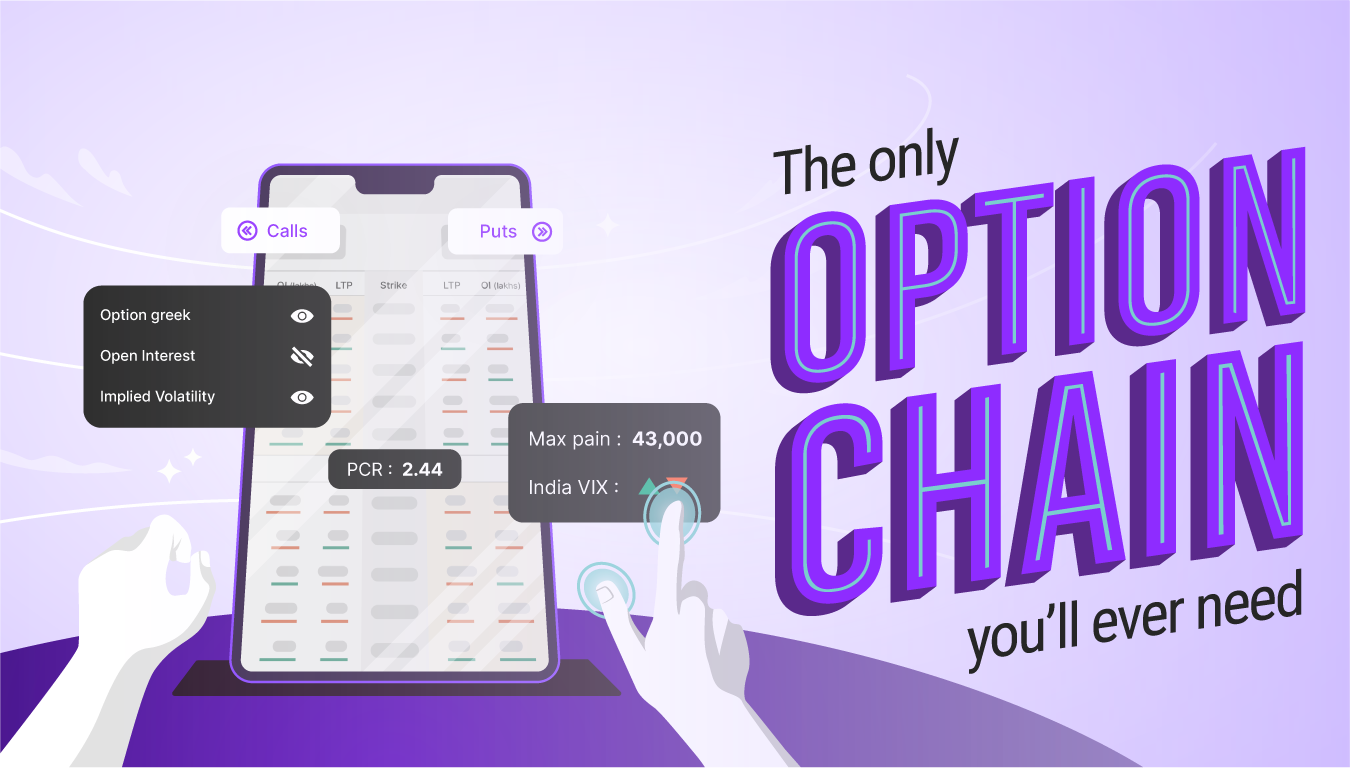- home/
- option chain
The only Option Chain you’ll ever need
Power-packed with 10+ data points to analyse trends, spot trading opportunities and place trades
+91
By signing up you agree to our Terms and Conditions
Analyse trends easily
With key data points - Option Greeks, Max Pain, OI Analysis, PCR, India VIX
Make Option Chain your own
Reorder and edit data points as per your choice
Compare option contracts
Enjoy unique colour differentiation between OTM, ITM, ATM, Calls & Puts
Save time, place faster trades
Trade directly from Option Chain
Getting Started With Option Chains
A guide on what is Option Chain, how to use it, its benefits and more
Want to read instead?
Getting Started With Option Chains
A guide on what is Option Chain, how to use it, its benefits and more
Read Market Blog